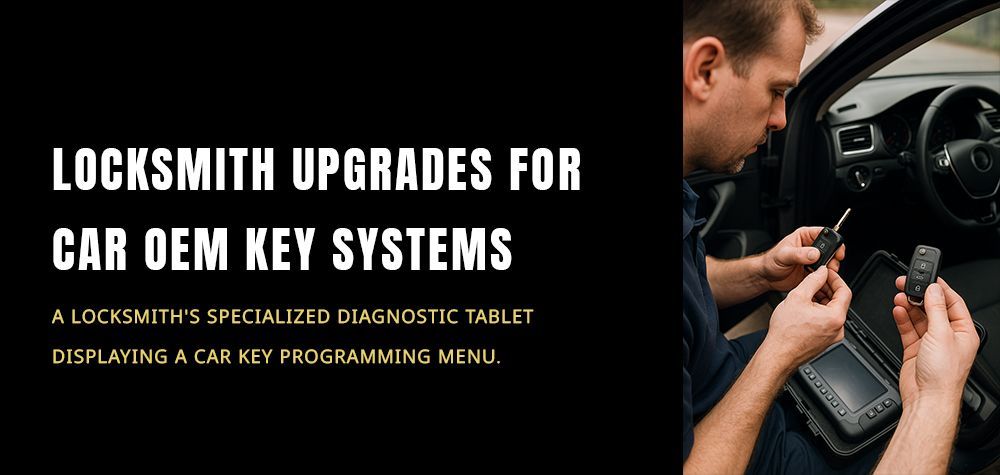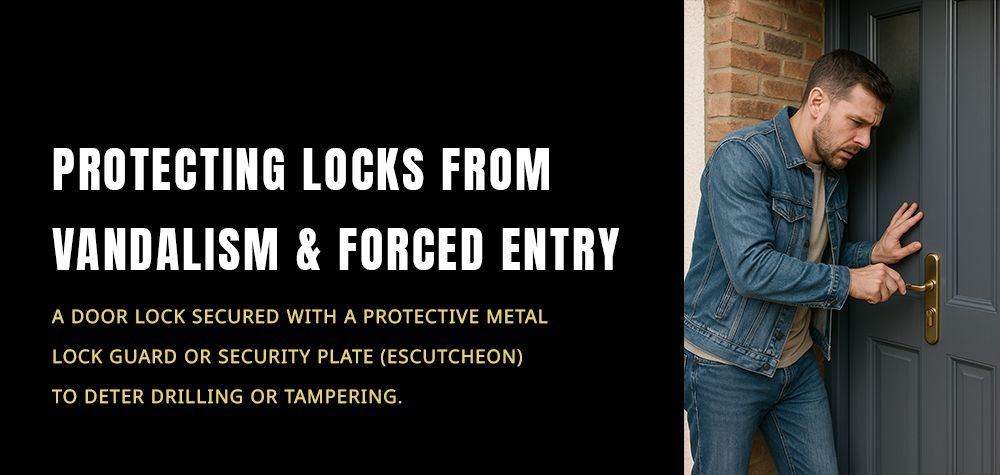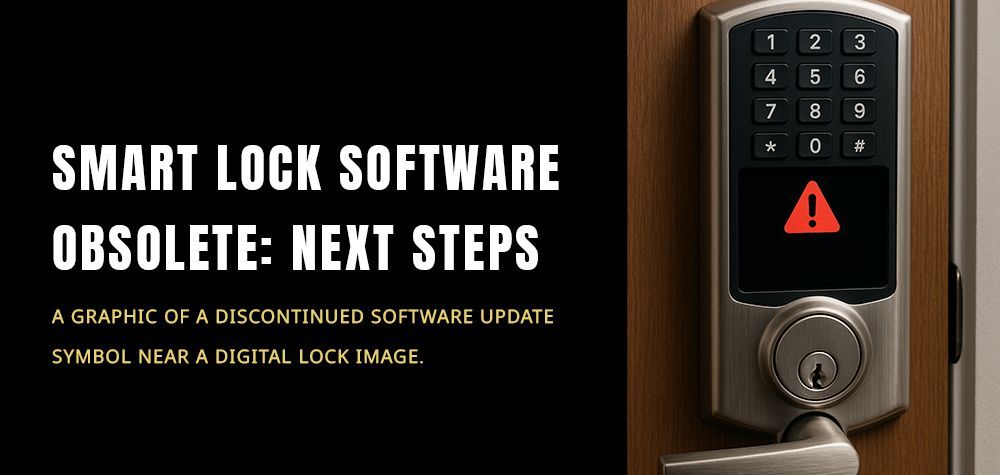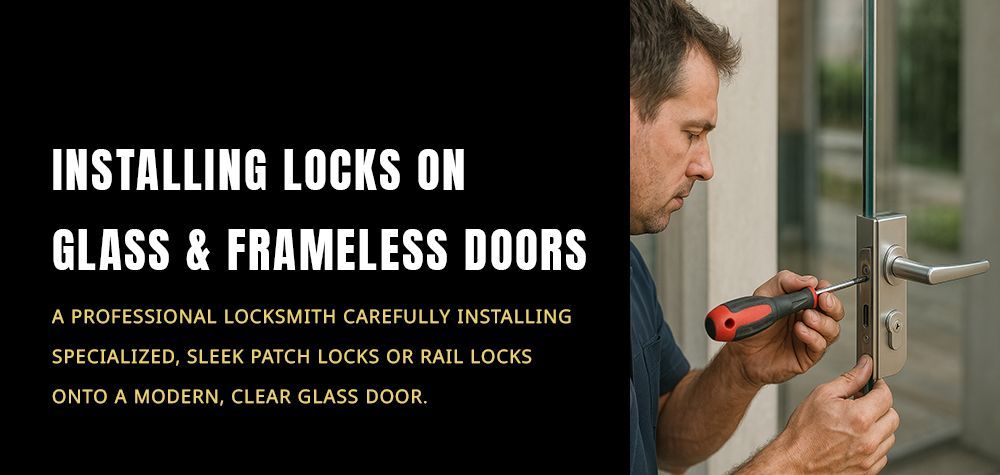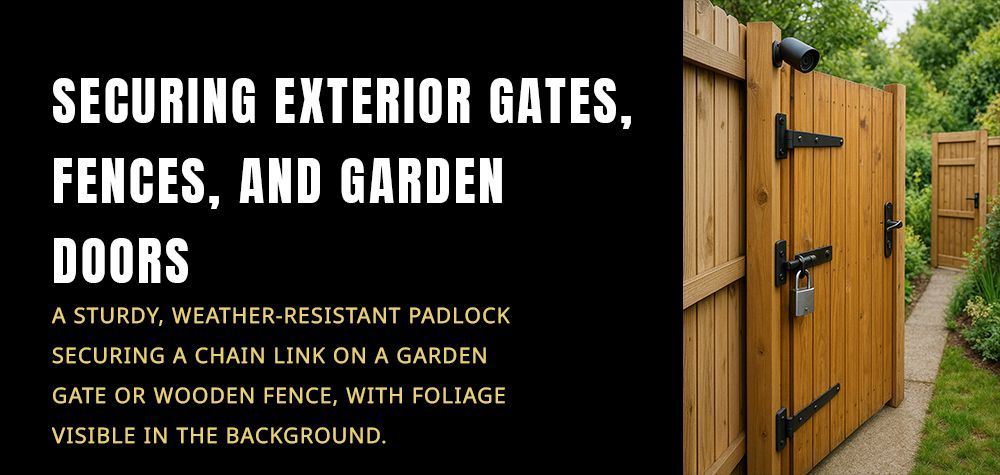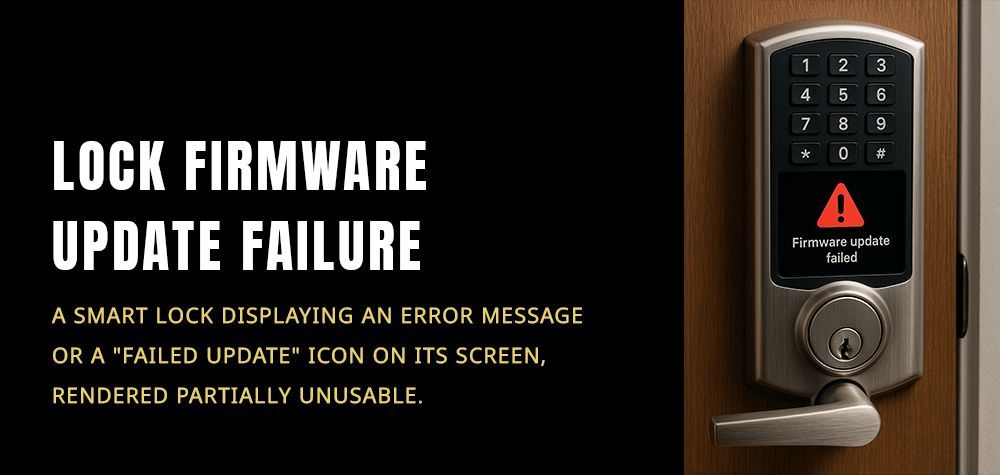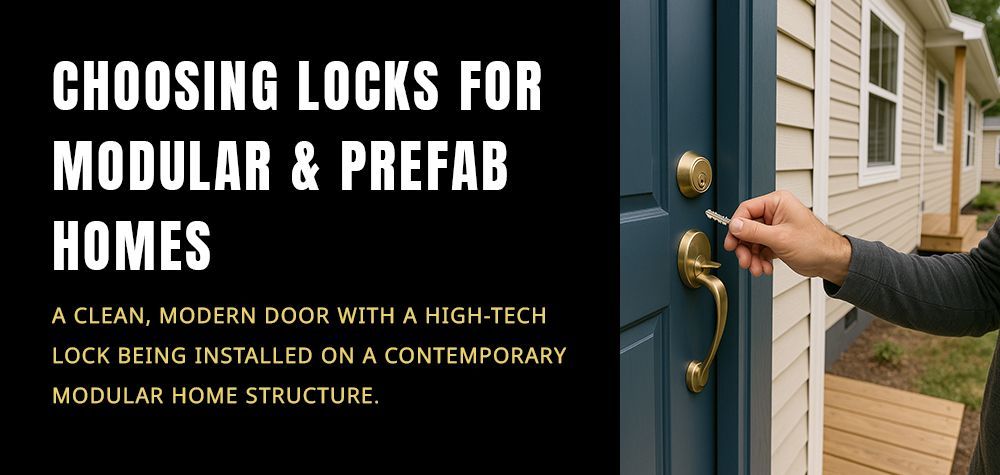How to Manage Lots of Locks & Keys for Large Properties (Estates, Campuses, Multi-Building Sites)
Managing a few locks is easy. Managing hundreds across a giant estate, school campus, hospital, corporate site, or multi-unit property? That’s an entirely different world. Suddenly, you’re dealing with dozens of doors, multiple entry levels, endless key copies, staff changes, emergencies, audits, and the constant fear of:
“What happens if one key goes missing?”
Large properties require a robust key and lock management strategy — not random keys stored in drawers or locks upgraded only after an issue arises. This guide walks through how to build a system that’s organized, scalable, secure, and surprisingly stress-free.
Can a locksmith upgrade your car’s OEM key system?
Why Big Properties Struggle With Key Management
Large estates and campuses aren’t chaotic because people don’t care — they’re chaotic because the environment itself is complex. Multiple buildings, multiple entry points, service doors, storage rooms, utility areas, offices, and staff zones all need access.
Add contractors, guest access, employee turnover, emergency exits, and deliveries… and suddenly keys multiply like rabbits.
The real problem isn’t the number of locks.
It’s the lack of a structured system tying everything together.
Build a Master Key System That Actually Works
Why a Master Key Saves Sanity
Instead of carrying a bunch of heavy, identical-looking keys, staff members can carry one key that opens only the doors they’re authorized for.
A properly designed master key system has different levels:
- A grand master key (top-level)
- Master keys for departments or zones
- Sub-master keys for specific buildings
- Individual keys for single rooms
It creates order, control, and accountability without requiring a ton of key duplication.
Don’t Let Everyone Have a Master Key
A mistake many campuses make: handing master keys to people who simply “might need them.”
The more people who carry them, the more dangerous and expensive the system becomes.
Stick to strict distribution rules, and always track who holds what.
Switch High-Traffic Areas to Smart Locks or Digital Access
Why Smart Systems Reduce Chaos
Instead of managing hundreds of physical keys, large sites can move high-use areas to:
- Key cards
- Digital PIN access
- Mobile phone access
- Bluetooth or Wi-Fi smart locks
It dramatically reduces lost key emergencies and makes revoking access instant — no rekeying required.
Mix Smart Locks and Mechanical Locks Wisely
Going fully digital is expensive, but a hybrid model works beautifully:
Smart locks for main entrances, staff entrances, and admin areas
Mechanical locks for low-traffic rooms, storage, and utility areas
This approach balances cost and control.
Create a Centralized Lock and Key Logbook
A large estate or campus cannot function securely without a centralized lock and key logbook. This record becomes the backbone of your entire security system because it tracks every lock, every key, and every person who has access to specific areas. Whether you choose a spreadsheet, a property management platform, or dedicated key-management software, the goal is the same: maintain a complete, up-to-date map of your property’s security infrastructure. This logbook should document rekeying events, smart-lock code changes, access privileges, and any lock repairs or upgrades. Without this master document, managing access quickly becomes chaotic and vulnerable.
Photograph Every Lock for Fast Troubleshooting
One of the most overlooked but useful habits is photographing every lock on the property. The picture should capture the lock type, its position on the door, the brand, keyway shape, and any visible wear or damage. These visual records help enormously during urgent repairs or replacements because your locksmith can identify exactly what they’re dealing with before they arrive. It saves time, prevents mismatched hardware, and avoids unnecessary delays — something that matters a lot when you’re managing dozens or hundreds of entry points.
Can a locksmith install locks in glass doors or frameless doors?
Color-Code, Label, and Store Keys with Intentional Structure
Color-coding isn’t just for school supplies — it’s one of the smartest ways to simplify key management in large properties. Assigning colors to buildings, zones, or departments makes it easier for staff to understand access levels at a glance. When new employees join or emergency access is needed, that visual clarity becomes a lifesaver.
Lockable Key Cabinets Are Essential
Keys for large properties should never be left lying around or stored in random drawers. Secure, wall-mounted key cabinets or digital key safes keep keys organized, while rotating access logs and tamper-evident key rings protect against internal misuse. Structured storage dramatically reduces the risk of unauthorized access and gives the property a professional, centralized system.
Schedule Regular Security Audits Before Issues Appear
Security audits are not a luxury — they are a necessity for large campuses and estates. A locksmith can examine the entire property and identify weak or outdated locks, misaligned doors, worn cylinders, or access levels that no longer make sense. They can also spot duplication risks and high-traffic areas that need stronger hardware. Doing this once or twice a year prevents small issues from turning into expensive emergencies.
Rotate Keys and Update Digital Codes Regularly
Even if your system seems perfectly functional, rotating physical keys and updating digital access codes every six to twelve months reduces the risk of unauthorized entry. People leave jobs, contractors forget to return keys, and old codes get shared too widely over time — scheduled updates keep the system clean.
Prepare for Emergencies Long Before They Happen
There is nothing more stressful than discovering that a master key has gone missing. That’s why every large property needs a documented protocol for lost keys or staff turnover. This plan should outline immediate lockdown procedures, which locks require rekeying, how digital credentials will be reset, and who needs to be notified. Having a clear chain of command prevents confusion and keeps the situation under control.
What happens when a lock’s firmware updates fails
Create a Red-Key Emergency Kit
Many large properties maintain a sealed emergency access kit that contains keys or override tools strictly for fire, medical emergencies, or natural disasters. Keeping this sealed and controlled ensures emergency responders can move through the property quickly without compromising everyday security.
Use Creative, Out-of-the-Box Access Control Solutions
Large properties benefit from tools that go beyond traditional lock-and-key setups. One powerful option is a check-in and check-out key station that requires staff to tap their ID card or phone before taking a key. The station automatically logs who took what, when they took it, and when it was returned — creating instant accountability.
Track Frequently Lost Keys with GPS Tags
Master keys used by maintenance, cleaning, or security teams tend to disappear the most. Attaching Bluetooth or long-range GPS tags to these keys saves hours of searching and prevents unnecessary, expensive rekeying of entire wings or buildings.
Create Time-Restricted Access Zones
Another smart approach is time-bound access. Cleaning crews may only be allowed access to certain areas during evening hours, students can only enter labs during supervised times, and contractors can receive one-day access credentials. This method controls unnecessary movement and reduces after-hours vulnerabilities.
Run Randomized Audit Checks
Unannounced key audits keep everyone responsible. By randomly verifying who still has which keys, you maintain accountability and make it clear that key responsibility is taken seriously throughout the property.
Partner with a Professional Locksmith for Long-Term Stability
A locksmith who specializes in large-property management can transform your chaotic lock system into a coherent, secure access ecosystem. They can design your master key structure, upgrade outdated locks, standardize keyways across buildings, create emergency access plans, and assist with staff turnover rekeying. Instead of dealing with security issues one door at a time, you get a property-wide system that grows with your needs.
Final Thoughts
Managing a high number of locks and keys isn’t just about physical hardware — it’s about creating a system that keeps people safe, improves organization, and adapts as your property evolves. With thoughtful documentation, smart technology, clear emergency planning, and professional support, even the largest estates and campuses can run smoothly without drowning in keys. When the system feels overwhelming, that’s often the perfect time to bring in a locksmith who understands large-scale security on a deeper level.
Call Us Any Time!


